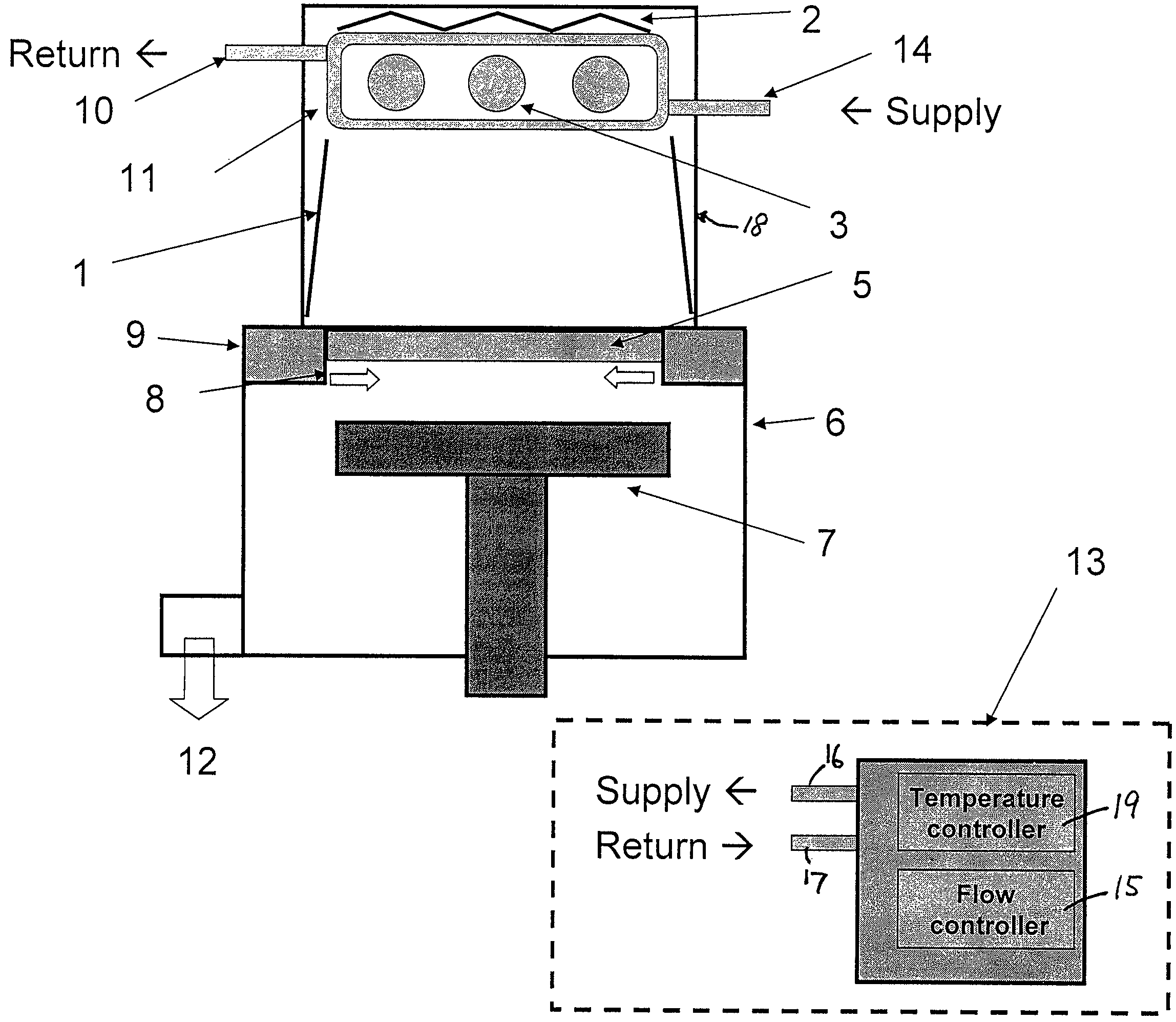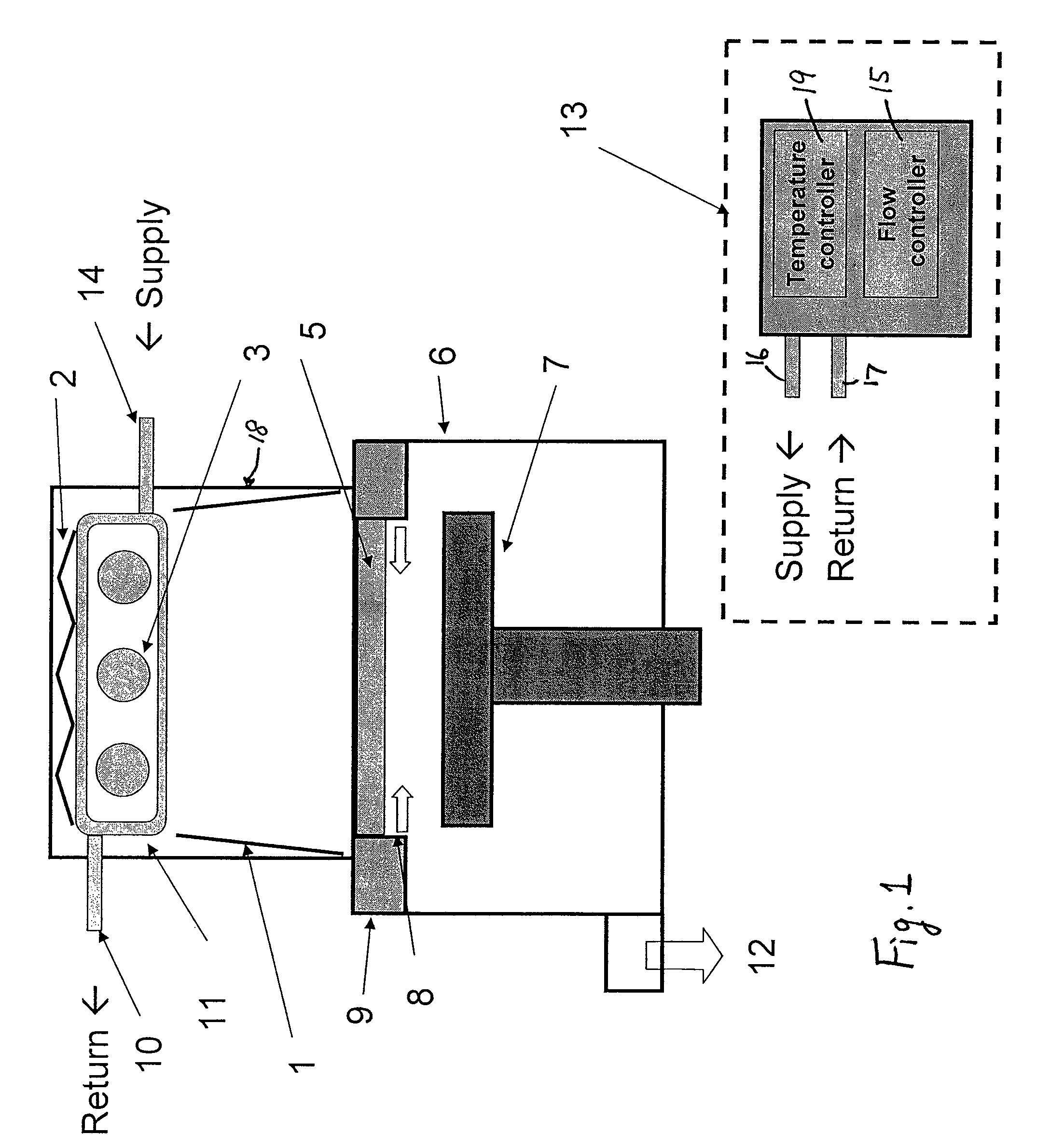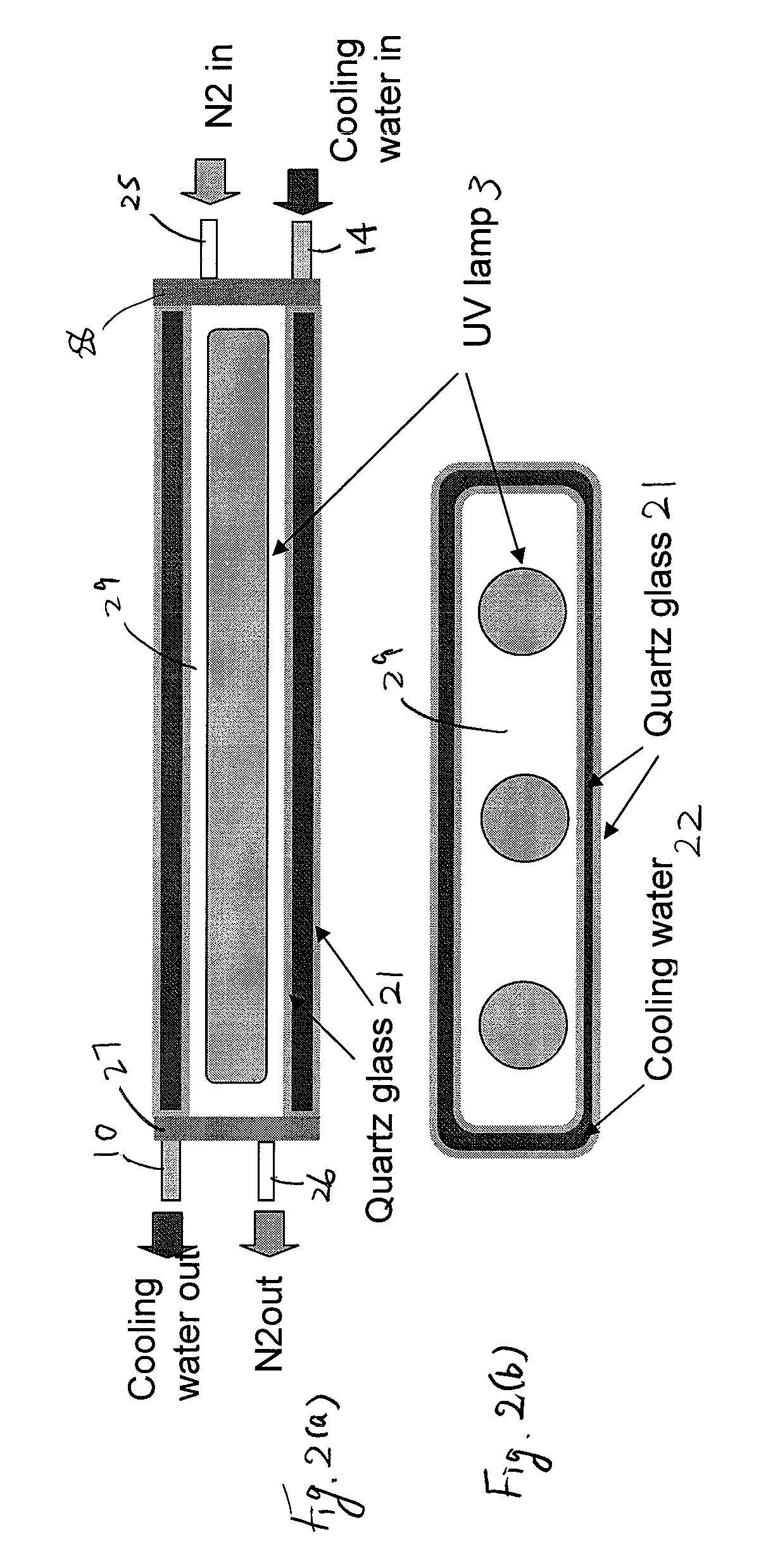UV light irradiating apparatus with liquid filter
a technology of irradiating apparatus and liquid filter, which is applied in the direction of optical radiation measurement, instruments, therapy, etc., can solve the problems of reducing the effective irradiation efficiency, affecting throughput, and reducing the quantity of effective irradiation light reaching the irradiation target, so as to improve the mechanical strength of the low-k film, reduce the effect of effective irradiation light and increase the energy consumption
- Summary
- Abstract
- Description
- Claims
- Application Information
AI Technical Summary
Benefits of technology
Problems solved by technology
Method used
Image
Examples
Embodiment Construction
[0017]The present invention will be explained with reference to preferred embodiments. However, the preferred embodiments are not intended to limit the present invention.
[0018]In an embodiment, the present invention provides a UV light irradiating apparatus for irradiating a semiconductor substrate with UV light, comprising: (i) a reactor in which a substrate-supporting table is provided, said reactor being provided with a light transmission window; (ii) a UV light irradiation unit connected to the reactor for irradiating a semiconductor substrate placed on the substrate-supporting table with UV light through the light transmission window, said UV light irradiation unit including at least one UV lamp; and (iii) a liquid layer forming channel disposed between the light transmission window and the UV lamp for forming a liquid layer through which the UV light is transmitted, said liquid layer being formed by a liquid flowing through the liquid layer forming channel.
[0019]The above embo...
PUM
 Login to View More
Login to View More Abstract
Description
Claims
Application Information
 Login to View More
Login to View More - R&D
- Intellectual Property
- Life Sciences
- Materials
- Tech Scout
- Unparalleled Data Quality
- Higher Quality Content
- 60% Fewer Hallucinations
Browse by: Latest US Patents, China's latest patents, Technical Efficacy Thesaurus, Application Domain, Technology Topic, Popular Technical Reports.
© 2025 PatSnap. All rights reserved.Legal|Privacy policy|Modern Slavery Act Transparency Statement|Sitemap|About US| Contact US: help@patsnap.com



